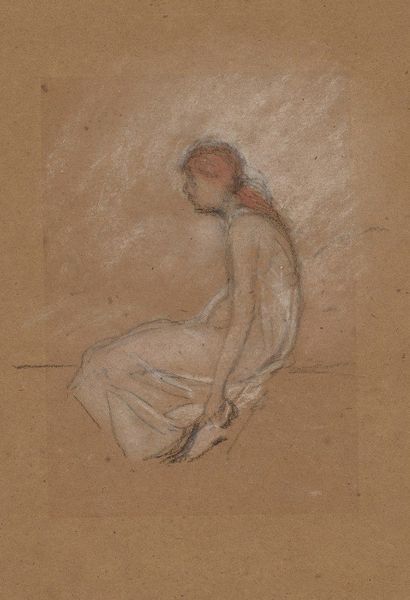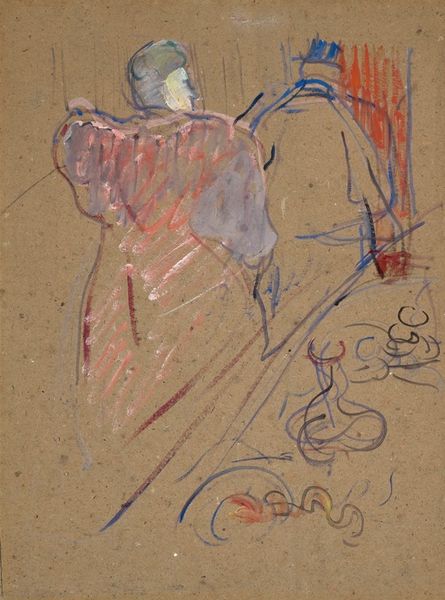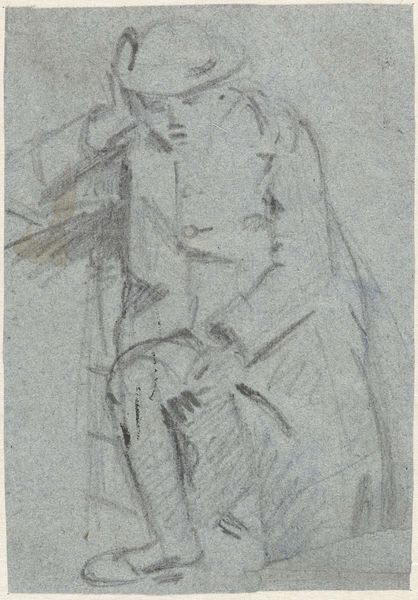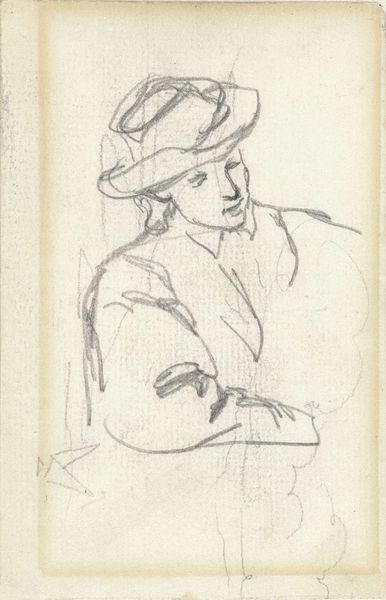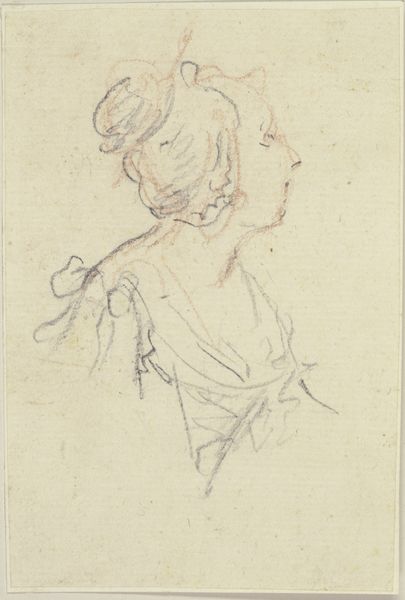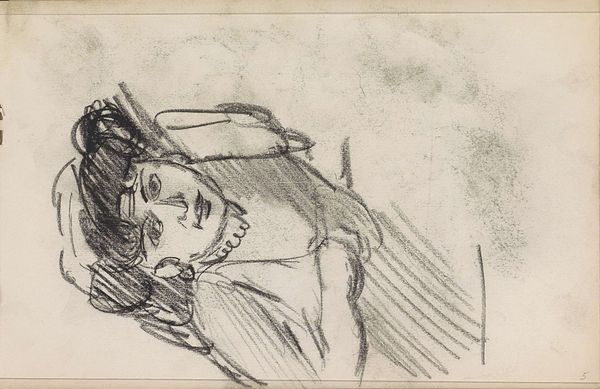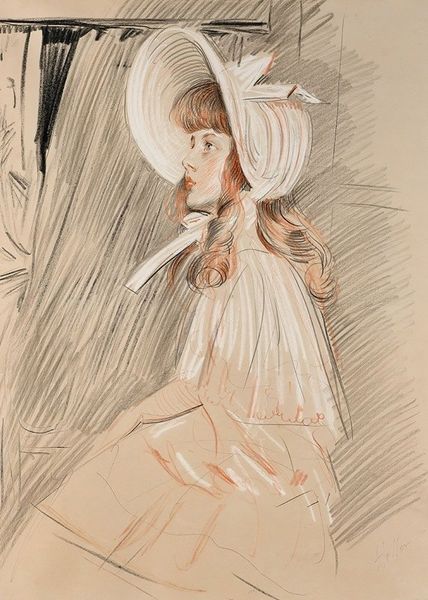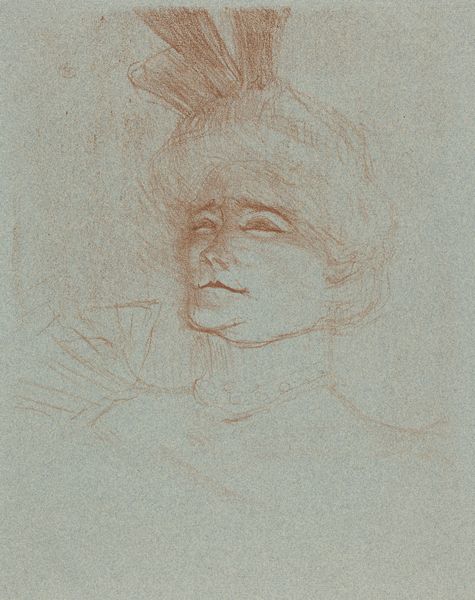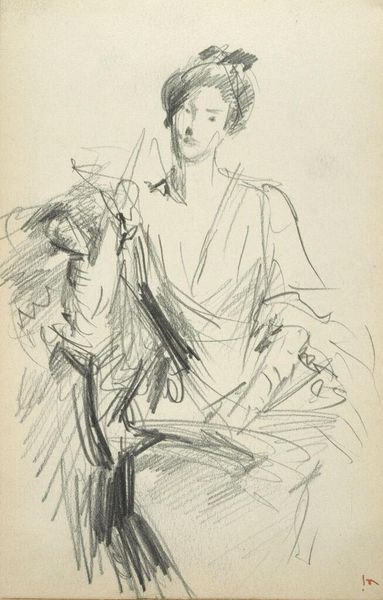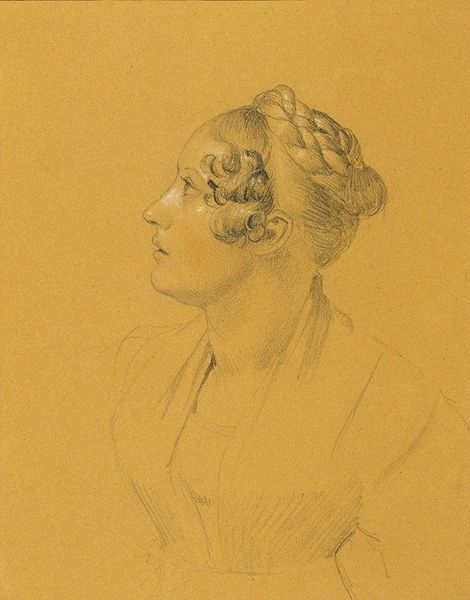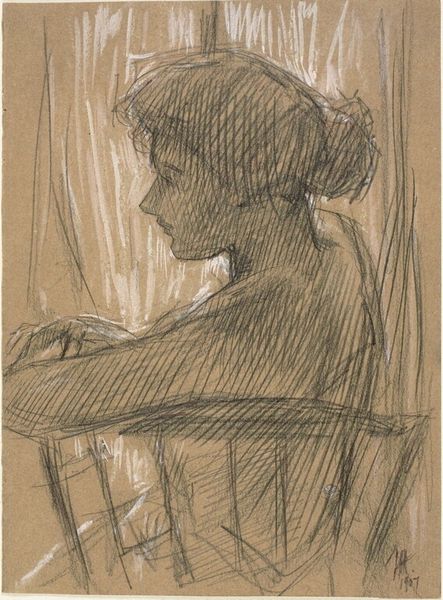
drawing
#
portrait
#
drawing
#
art-nouveau
Copyright: Public Domain: Artvee
Curator: Let's turn our attention to Toulouse-Lautrec's "Jane Avril," a drawing created around 1892. What are your initial impressions? Editor: The overall mood is strikingly delicate, almost ephemeral. The sketch-like quality really draws me in; it feels as though Avril is emerging from the very material itself. The muted palette of earth tones contrasted with faint blues and yellows also makes for an interesting textural interplay. Curator: Absolutely. Lautrec, as we know, frequented the cabarets of Montmartre, and Jane Avril was one of the stars. Considering Avril's reputation as a dancer with a somewhat melancholic air, I'd say the fragility you've noted speaks to something of her persona, her ability to construct a particular artistic identity at that moment in time. Her life story itself is captivating, filled with complexities regarding her sexuality and battles with mental health. Editor: The lines, though seemingly casual, betray a sophisticated economy. The hat, for example – just a few strokes suggesting the feathers, the shape, volume and then look at the faint outlines describing her posture! I find this use of minimal gestures creating a sense of a complete image just perfect. Curator: That reduction certainly reinforces the themes and issues relating to female performative identity that run through Lautrec's oeuvre. Avril isn’t merely being represented, she is being constructed as a public persona. We can discuss the power structures within such visual depictions and her agency over the whole image, since her style really gave a definite tone to Parisian culture in the 1890s. Editor: I'm also drawn to the artist's signature down there; it mirrors the fluid line-work in the portrait itself. Even its placement on the very lower-right edge gives an unstudied aspect, or, may be, there is actually a deeper, subtler integration of its presence into the broader composition. Curator: A great observation. By looking at "Jane Avril" through an intersectional lens, considering both social history and formal artistic choices, we begin to unravel the complex tapestry of fin-de-siècle Parisian culture and celebrity as constructed by gender and class dynamics. Editor: A fascinating look into form and meaning, demonstrating how a seemingly simple drawing can tell so much about a time and a person through its delicate, elegant language.
Comments
No comments
Be the first to comment and join the conversation on the ultimate creative platform.

